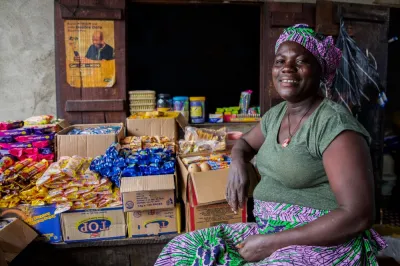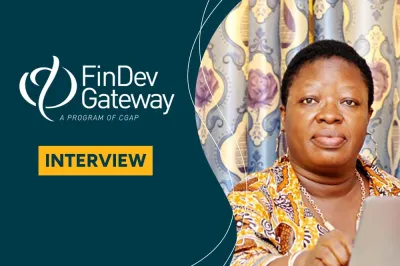Bottom-Up or Top-Down: Which Way Should Regulation Go?

When does microfinance regulation help the institutions it covers, and when does it hinder them? This was the question put on the table at the start of the second day of the SPTF Annual Meeting held in Mexico City in June. Of course in an ideal world, regulation should never be a serious obstacle for well-run institutions, but rather help to push them in the right direction of protecting their clients and the stability of the financial system. However, the reality is sometimes different, especially when regulation is new, the institutions are small and cash-strapped, and the sector is accustomed to a certain level of informality. Complicating matters further is the double bottom line in microfinance, where institutions aim not only to protect clients but also to produce a social benefit for them. How can regulation best help institutions to achieve social impact?
The plenary discussion on this topic, entitled “Make or Break: A Conversation between Regulators and the Regulated,” was one of the most lively and engaging sessions of the SPTF event, bringing together representatives from Mexico, Bolivia and Nicaragua to respond to provocative and thought-provoking questions thrown at them by the quick-witted moderator, Claudia Revilla Ostos, Director of ProDesarrollo, Mexico’s national microfinance network.

One of the big questions of the panel was: Should regulation be bottom-up or top-down?
Jim Madriz, Director of CONAMI, Nicaragua’s regulating body for microfinance, was the first to respond, arguing that regulations should be developed from the bottom-up. According to Madriz, regulations need to be feasible for institutions to apply, and in fact they should help institutions to grow and fulfill their mission. She described how CONAMI has worked hand-in-hand with ASOMIF, Nicaragua’s national microfinance network, to get to know the sector well and receive input from the institutions that would be affected by regulation, before publishing the norms. It was very important for them to “ponerse en los zapatos del otro” (walk in someone else’s shoes) in order to have a good understanding of the needs of the sector and apply appropriate regulation.
“If you don’t understand the market, you can’t regulate it,” agreed Rudy Araujo Medinaceli, Secretary General of ASBA, the Association of Supervisors of Banks of the Americas, in an interview with the Microfinance Gateway. But he clarified, “Regulation will probably always be the role of the state, and so it will always be seen as top-down. What we need to demand is that the state first understands, then regulates, and this understanding can be seen as bottom-up.”
If you don’t understand the market, you can’t regulate it.
Finding the right balance
José Auad Lema, General Manager of the Bolivian MFI CRECER, agreed that regulators must listen to those who are operating in the field. But he also argued, as a representative of a regulated institution, that the regulators must push institutions to move out of their comfort zones. He used the example of interest rates: if the regulators had simply asked the banks if they would like to set limits on interest rates, of course they would have said no. But the regulation went into effect, and now 50% of banks’ portfolios must have regulated interest rates. What has happened as a result? Profitability fell, but Bolivia still has a system with strong financial institutions that have returns on equity (ROEs) of 15-18%. So the regulation pushed institutions to become more efficient. Financial service providers are finding a new equilibrium, a new way of operating under these rules, and now they have become so efficient that once again the regulators are questioning their profits - this time to impose higher taxes. At the end of the day, only the biggest and strongest will survive in the Bolivian market, he predicted.
Now what effect have these regulations had on clients in Bolivia? Auad Lema highlighted two important issues: 1) organizations with regulated interest rates have decreased the amount of microcredit they now offer, and 2) SME banks have distanced themselves from the base of the pyramid. So the unintended effect is that now low-income clients have fewer options for financial services than they did before the regulation.
In the end, the challenge is to strike the right balance between pushing institutions to become more efficient and lower costs for their clients, and allowing for favorable conditions so that they can continue serving the poor and financially excluded populations.
How can we find that perfect balance? Providing the regulator’s perspective, Araujo said that many elements need to be taken into consideration. First of all, regulators need to understand the risks in each segment, and adjust regulations accordingly. This is where many fail, and black markets end up being created. Secondly, regulators must understand their role and know the market well. Finally, it is important for regulators to allow MFIs to have reasonable returns, otherwise the sector won’t exist. Distortions such as interest rate caps can strangle the sector and make it disappear. However, if you see an interest rate of 150%, or if the president of a microfinance institution is earning the same salary as the president of a corporate bank, of course you need to worry, clarified Araujo. It is important to set limits.
Serving excluded segments
So how can regulations help to promote access to excluded sectors such as the rural population? Nicaragua and Bolivia provide some examples. The microfinance law in Nicaragua offers institutions who meet certain social performance requirements the opportunity to access a special promotional fund that aims to help them reach excluded sectors. The organizations must show that they protect their clients, include women, and give opportunities to low-income sectors, and they must get certified in Social Performance Management. In Bolivia, institutions such as CRECER are obligated to open a branch every year in areas where there are no banks.
Mexico, on the other hand, has a real challenge ahead on this front. Araujo described the situation as a hyper-urbanization, with rural areas being forgotten, and called for the sector to figure out how to go beyond urban areas and reach rural populations efficiently. In addition, Jorge Torres, Director of Financial Education at CONDUSEF, Mexico’s consumer protection agency, argued that regulators in Mexico need to work on differentiating which type of regulations are appropriate for which type of financial service provider. Some institutions are becoming more and more profitable while others are barely surviving. Torres argued that it is not fair to lump all financial institutions together and that regulators need to promote a healthier development of the sector.
Revilla closed the panel noting that regulators need to understand the importance of social performance management.

The Microfinance Gateway and the Portal de Microfinanzas were media partners for the Annual Meeting of the Social Performance Task Force (SPTF) held in Mexico City from 6-8 June.


